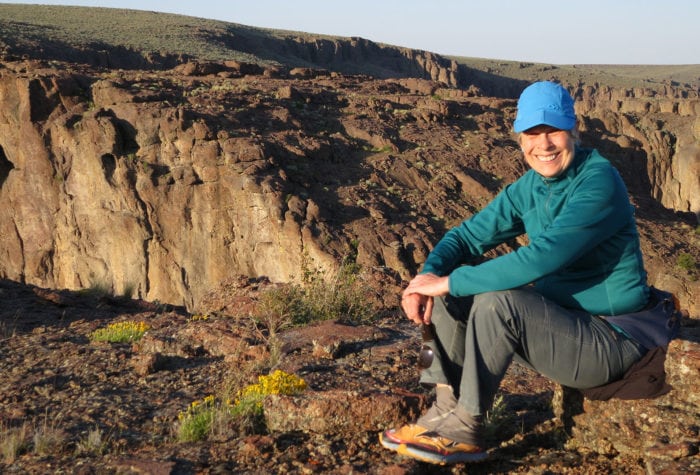Videos can tell stories, convey ideas and immerse the viewer into an environment in ways that are difficult to achieve with photographs or the written word. And, with many video cameras becoming better and more affordable and a number of free editing programs available, creating videos has become increasingly accessible.
Perhaps you’d like to create a video about your experience in Oregon’s high desert? This post, which is part one of a two-part series, offers pointers to get you started.
Planning
1. Prep your video equipment
To make a video about Oregon’s public lands, all the gear you really need is a digital video camera and access to some type of video editing software. If you have access to them, a tripod and a variety of lenses and filters will add significantly to your production.
Whatever gear you use, make sure it’s ready to go before you head off into the desert. Fully charge all batteries, and pack any spare batteries you have. Make sure you have enough memory, then bring some extra memory cards just in case. You’ll also need to pack bags to keep your gear dry and clean and enable you to carry it all across the landscape.
2. Decide what kind of video you want to make
Before you hit the road, think through the type of video you want to make. Will it be a video about you and your friends sharing an adventure in the Oregon Outback? Or, a video focused on desert plants and animals? Do you want to educate people about a specific topic, or tell a particular story? Knowing what kind of movie you want to make will help you get the right kind of footage when you’re out in the field.
Consider the narrative arc of your video: the beginning, middle, end. Your narrative will keep viewers engaged. A video focused on one particular day might begin at sunrise, cover the events of the day in the middle, and wrap up after sunset. If your narrative is geographic, the start of the video might be when you enter into a specific place and the ending could be when you leave that place. Eventually, you’ll have to arrange your footage in some way; if you come up with a plan first, you’ll have the shots to tell the story you want. This is filmmaking 101. I’ll touch on it again when I talk about shooting on location and also about editing your footage.
3. Do some research
To create a video about a wild place, start by pulling out a good map and familiarizing yourself with the area. Are there any particular environments or landmarks you’d like to get footage of? Look for photos or videos from others that might tip you off to particularly picturesque or interesting locations.
If your video intended to teach your audience a new skill or convey specific information, researching these topics before your trip will enable you to catch the appropriate footage to impart these lessons.


